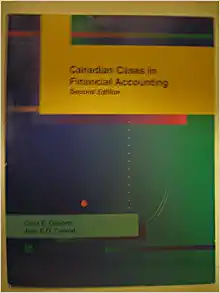Answered step by step
Verified Expert Solution
Question
1 Approved Answer
The elasticity modulus of a nickel alloy is measured using the concept of an infinitely thin rod supporting a mass M and oscillating at its
The elasticity modulus of a nickel alloy is measured using the concept of an infinitely
thin rod supporting a mass M and oscillating at its natural frequency. The elasticity
modulus is equal to
 1 Mathematical Applications (MIME-209) Assignment No. 6 (Given: Feb. 17, 2011; Due: March 1, 2011) Prof. Mainul Hasan (Wong #2M080; Tel : 398 2524) (E-mail:mainul.hasan@mcgill.ca) EXPERIMENTAL ERROR PROPAGATION (Chapter - 8) 1. The elasticity modulus of a nickel alloy is measured using the concept of an infinitely thin rod supporting a mass M and oscillating at its natural frequency. The elasticity modulus is equal to: E = 16 M L3 f2 / 3 d4 where M : mass of the central load plus equivalent mass of rod (600.0 2.4 g) L : length of rod (39.60 0.18 cm) f : frequency (420.0 9.6 hertz) d : rod diameter (0.860 0.006 cm) All errors are one standard deviation. significant source of error. Determine E, its variance, and the most 2. The Stern-Grahame equation predicts the adsorption density of a surface active ion in the Stern plane of a solid. It is given by: = 2 . r . C . exp( - Go ads ) R xT Calculate the adsorption density and its relative standard deviation for the following data: r, the effective radius of the ion, 18 (assume a negligible error); C, bulk concentration, 0.12 mole/m3 (S.D. 0.012 mole/m3); Gadso, 6000 joules/mole (S.D. 600 joules/mole); R: 8.314 joules/moleKo (no error) and T, 360oK, negligible error). (Hint: 1 = 10 -10 m; 1 L = 10-3 m3) Include units! 3. Energy requirements for grinding, W, can be estimated using the Bond formula: W = Wi ( 10 P 80 - 10 F 80 ) 2 where Wi, the work index, is 21.6 2.4 kWh/t, F 80, the feed size (in m), is 1200 240, and P80, the product size (in m), is 120 18. The error on the W i and the P80 is positively correlated, with a correlation coefficient () equal to 1.02. (The covariance is the product of the standard deviations and ) (A) Calculate a 95% confidence limit (upper confidence limit) for the maximum energy requirements. (B) Which is the most significant source of errors
1 Mathematical Applications (MIME-209) Assignment No. 6 (Given: Feb. 17, 2011; Due: March 1, 2011) Prof. Mainul Hasan (Wong #2M080; Tel : 398 2524) (E-mail:mainul.hasan@mcgill.ca) EXPERIMENTAL ERROR PROPAGATION (Chapter - 8) 1. The elasticity modulus of a nickel alloy is measured using the concept of an infinitely thin rod supporting a mass M and oscillating at its natural frequency. The elasticity modulus is equal to: E = 16 M L3 f2 / 3 d4 where M : mass of the central load plus equivalent mass of rod (600.0 2.4 g) L : length of rod (39.60 0.18 cm) f : frequency (420.0 9.6 hertz) d : rod diameter (0.860 0.006 cm) All errors are one standard deviation. significant source of error. Determine E, its variance, and the most 2. The Stern-Grahame equation predicts the adsorption density of a surface active ion in the Stern plane of a solid. It is given by: = 2 . r . C . exp( - Go ads ) R xT Calculate the adsorption density and its relative standard deviation for the following data: r, the effective radius of the ion, 18 (assume a negligible error); C, bulk concentration, 0.12 mole/m3 (S.D. 0.012 mole/m3); Gadso, 6000 joules/mole (S.D. 600 joules/mole); R: 8.314 joules/moleKo (no error) and T, 360oK, negligible error). (Hint: 1 = 10 -10 m; 1 L = 10-3 m3) Include units! 3. Energy requirements for grinding, W, can be estimated using the Bond formula: W = Wi ( 10 P 80 - 10 F 80 ) 2 where Wi, the work index, is 21.6 2.4 kWh/t, F 80, the feed size (in m), is 1200 240, and P80, the product size (in m), is 120 18. The error on the W i and the P80 is positively correlated, with a correlation coefficient () equal to 1.02. (The covariance is the product of the standard deviations and ) (A) Calculate a 95% confidence limit (upper confidence limit) for the maximum energy requirements. (B) Which is the most significant source of errors Step by Step Solution
There are 3 Steps involved in it
Step: 1

Get Instant Access to Expert-Tailored Solutions
See step-by-step solutions with expert insights and AI powered tools for academic success
Step: 2

Step: 3

Ace Your Homework with AI
Get the answers you need in no time with our AI-driven, step-by-step assistance
Get Started


